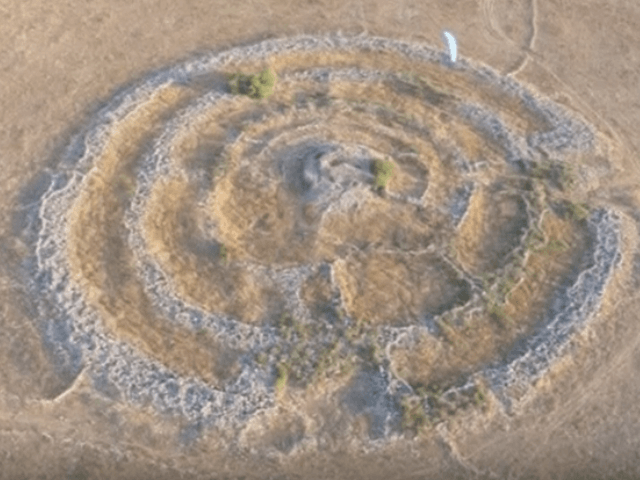TEL AVIV – An enormous prehistoric stone structure in Israel’s north, dubbed the “Stonehenge of the Levant,” remains a total enigma to archaeologists.
Galgal Refaim (Hebrew for “wheel of ghosts”) is the largest and oldest stone structure in the Middle East, containing 42,000 basalt stones and dating back 5,000 years – making it a contemporary of England’s Stonehenge.
But curiously, the archaeological site remains shrouded in mystery and experts cannot agree on what it was used for. Situated on the Golan Heights, the structure is comprised of concentric circles in the form of a labyrinth with walls reaching some eight feet high. The outer wall is 520 feet in diameter. Watch a video presentation below for an indication of the size:
On the winter and summer solstices, the sunrise lines up with cracks in the rocks. This has led some archaeologists to believe it was an ancient calendar, while others hold that it was a monument used for astronomical observations and religious calculations. Indeed, these days the only visitors the magnificent site manages to attract are mostly astronomers and astrologists.
A 20-foot-long burial chamber in the middle of the structure has led other experts to conclude it was a burial monument for important people.
“We have bits of information, but not the whole picture,” Uri Berger, an expert on megalithic tombs with the Israel Antiquities Authority, told ISRAEL21c. “It’s a mystery.”
Since the site’s first excavation in the 1960s, even its age has been up for debate, with some dating it back to the Early Bronze Age II (3000–2700 BCE) and others arguing that its more likely to be from the Late Bronze Age (1550–1200 BCE).
According to Berger: “There’s always another opinion or theory.”
Even though ancient prehistoric stone structures fascinate tourists all over the world – including Stonehenge, Chichen Itza in Mexico, and Machu Picchu in Peru, which rack up close to four million visitors per year between them – only a handful of people visit Galgal Refaim and most Israelis aren’t even aware of its existence.
There are a number of theories to explain the lack of visitors. One is that the site can only be seen properly from the air and another is that there is simply a lack of publicity surrounding it. A third reason is that the area is used by the IDF for training exercises during the week and thus the site is only open on weekends and holidays.
Berger, for his part, encourages anyone visiting the Golan Heights to come see this mammoth mystery for themselves.

COMMENTS
Please let us know if you're having issues with commenting.